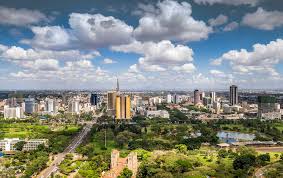Nairobi, a city known for its vibrant energy and fast-paced lifestyle, also faces significant environmental challenges. To live here, one must endure high noise pollution from moving vehicles, crowds, and loud music from entertainment spots. The Central Business District (CBD), in particular, feels like a heat trap due to the congestion of cars, each emitting heat and toxic fumes, contributing to an increasingly unlivable environment. Additionally, air pollution from industrial emissions and the combustion of various materials continues to degrade our surroundings, posing serious health risks and accelerating climate change.
So, how can we transform Nairobi into a greener and more sustainable city? The answer begins with individual responsibility. Simple acts such as properly disposing of waste, reducing single-use plastics, and choosing sustainable transportation options can collectively make a difference. Instead of heavily relying on private vehicles, we should embrace public transportation, cycling, and walking to reduce congestion and carbon emissions in the CBD.
However, real change requires systemic solutions. The government must play a leading role by implementing and enforcing environmental policies that prioritize conservation. This includes increasing green spaces, regulating industrial emissions, and incentivizing eco-friendly urban planning. Investments in mass transit systems such as electric buses and commuter rail services can also significantly cut down vehicle emissions.
The big question remains: When will all these efforts materialize? The answer depends on both individual and collective action. If we start today, pushing for policy changes and adopting greener habits, Nairobi can gradually transform into a cleaner, healthier, and more sustainable city. The journey to a greener future begins with us.


















